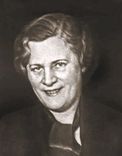Creating Childcare Facilities in Poland
During the late 1920s and 1930s, women labour inspectors in Poland led a campaign to prompt employers to install daycare facilities for the children of mothers employed by larger industrial enterprises. The push for factory-based childcare was driven by the desire to lower high infant mortality rates and alleviate the difficulties the lack of childcare created for working women, as well as broader concerns for the well-being of working mothers and their children. Despite numerous obstacles including resistance from private employers, financial constraints, and the economic downturn of the 1930s, progress was made in establishing these facilities, largely due to the determined efforts of labour inspectors and their collaborations with other state officials and social reformers.

Daycare at the factory of the Polish Tobacco Monopoly in Warsaw (from Development of Maternity Protection (1931) by Maria Leśniewska)
The legal foundation for childcare facilities was laid in the 1924 law regulating the labour of women and minors. This law mandated the creation of day nurseries in factories employing more than one hundred women. The rationale behind these provisions was both humanitarian and practical: ensuring the health and well-being of children would, in turn, benefit their working mothers, reducing absenteeism and improving productivity. However, implementing these regulations proved to be a complex and contentious process. Factory owners, particularly those in the textile industry – an industrial branch employing large numbers of women – opposed the initiative, arguing that the financial burden of establishing and maintaining nurseries was too great. Some employers attempted to undermine workers’ support for the measure by spreading misinformation, suggesting that the costs would be deducted from wages.
Women labour inspectors, including Halina Krahelska and Maria Leśniewska, worked to raise awareness of the importance of factory nurseries through publications, public lectures, and outreach efforts in workers’ organisations. Their advocacy was instrumental in securing state support for the initiative. State-owned enterprises took the lead in establishing nurseries, setting a precedent for private industry. The first childcare facilities were introduced in government-run industries: the State Tobacco Monopoly, the State Alcohol Monopoly, and the Matches Monopoly. By 1931, 101 facilities had been created, providing care for approximately a quarter of the women entitled to use them.

Cover of Development of Maternity Protection for Workers in Polish Industry (1931) by labour inspector Maria Leśniewska (Source: Polona)
Although progress was made, the expansion of factory nurseries remained slow, particularly in private enterprises. Large textile manufacturers, such as the Scheibler and Grohmann company in the city of Łódź, argued that their workforce was too large to accommodate the law’s requirements as they would need multiple nurseries to provide care for the hundreds of children who needed it. The Ministry of Labour and Social Assistance responded by broadening the interpretation of the law, allowing for alternative forms of childcare provision. Instead of insisting on factory-based nurseries alone, the ministry supported the development of other types of care facilities. One of the early adopters of this diversified approach was the State Alcohol Monopoly, which introduced home-based nursing assistance to support working mothers.
Collaboration with independent social reform organizations also helped expand childcare provisions. Associations such as “A Drop of Milk” in Łódź and the Society for Infant Care in Warsaw provided crucial support, establishing care facilities that complemented state efforts. Women labour inspectors worked closely with these organisations to ensure that care met the necessary standards. This cooperation helped mitigate the impact of the economic downturn of the 1930s, which had led to mass layoffs of women workers and temporarily stalled the development of childcare facilities.
By 1939, despite ongoing financial difficulties and employer resistance, the number of childcare facilities had more than tripled compared to the early 1930s. The expansion of day care and alternative childcare options was the result of persistent efforts by women labour inspectors and their allies who worked to ensure that working mothers received the support they needed. While private industrialists remained reluctant to invest in factory-based nurseries, public sector initiatives and cooperation with social reform organisations helped increase access to childcare for thousands of women workers. The establishment of these facilities not only improved the immediate conditions of working mothers but also laid the groundwork for future discussions on maternity protections and women’s labour rights in Poland.
The case of childcare provision in interwar Poland highlights the intersection of labour activism, state intervention, and social reform. Women labour inspectors played a pivotal role in advocating for and implementing these measures, demonstrating that improvements in workers’ rights often require sustained effort and strategic collaboration. The progress made during this period set a precedent for future labour policies concerning women and children, reinforcing the idea that social welfare and economic productivity are deeply interconnected.



